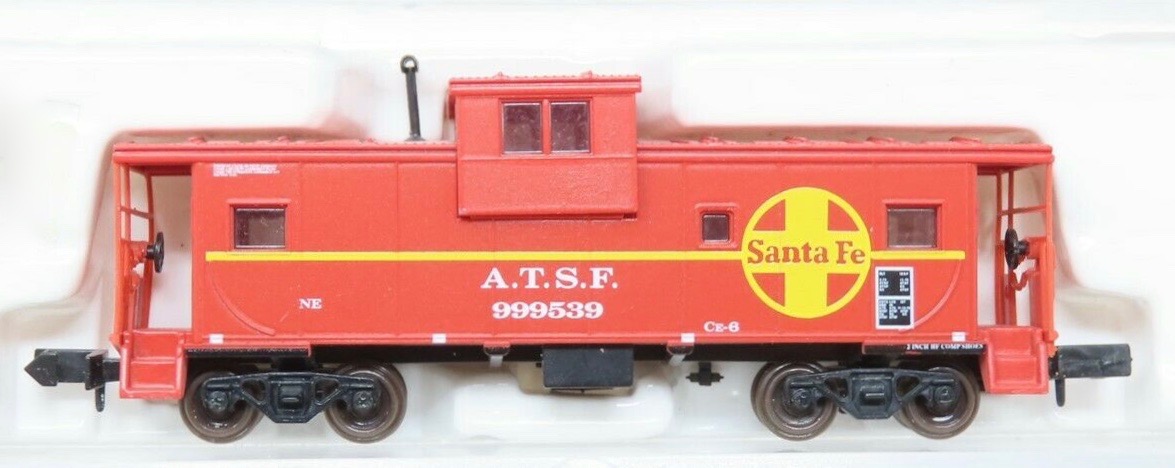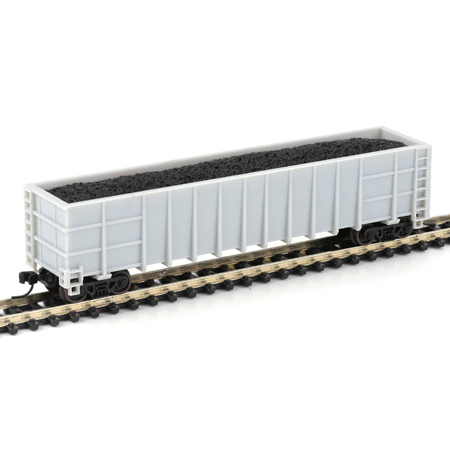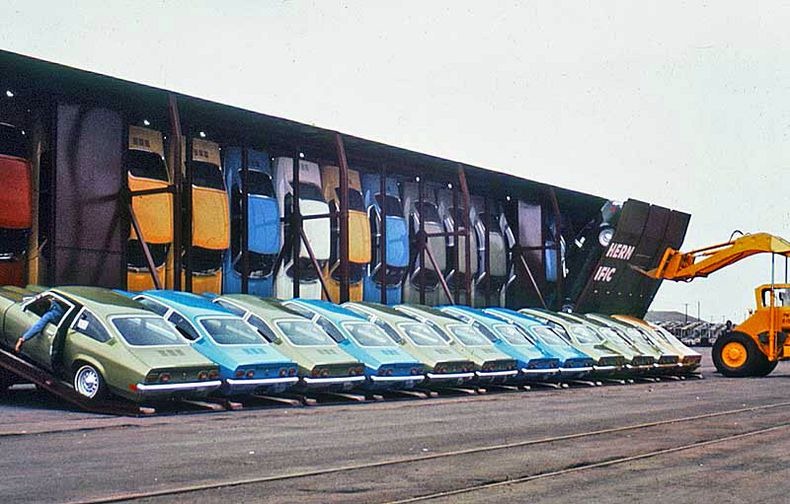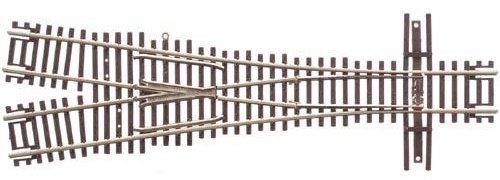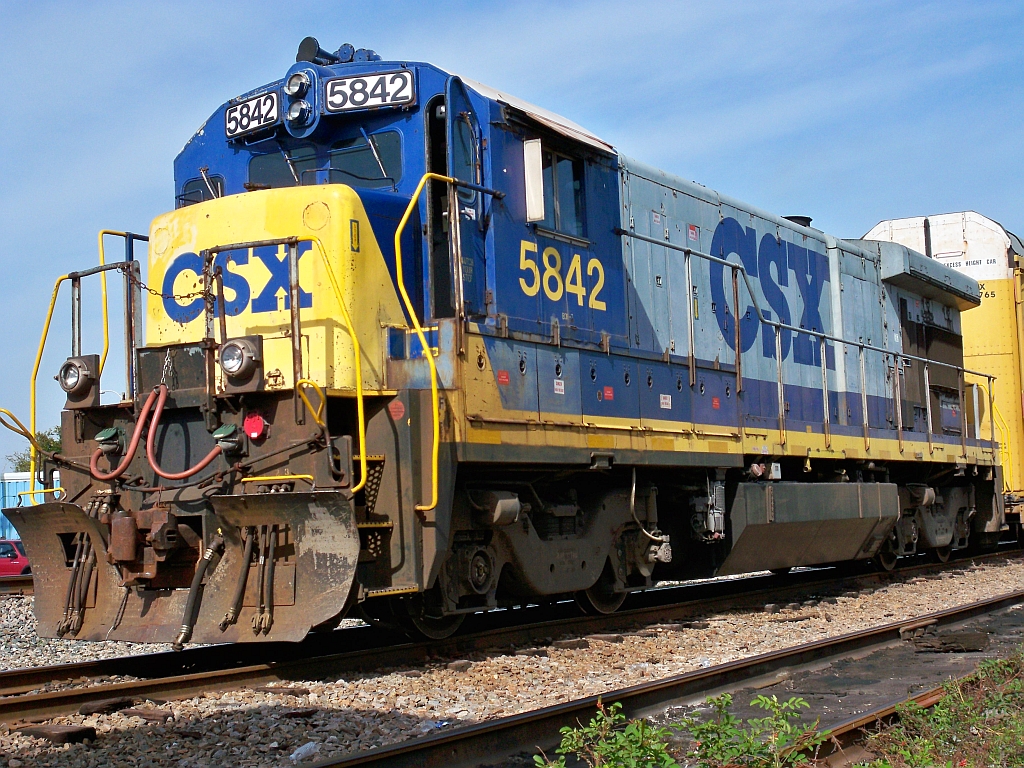Prototype History: The GE B36-7 is a 4-axle diesel-electric locomotive built by GE Transportation Systems between 1980 and 1985. 222 examples of this locomotive were built for North American railroads and eight units were built for a Colombian coal mining operation. The units were designed as successors to GE's U36B's. Of the 230 locomotives built, 180 of them were built for two Eastern railroads - Seaboard System Railroad (which became part of CSX Transportation in 1986) and Conrail.
These 4-axle locomotives were powerful ones when introduced in 1980. When first built the units were rated at 3,600 hp (2,700 kW), later versions were rated at 3,750 hp (2,800 kW). They were designed for fast and priority service, moving intermodal and container trains. Most of Seaboard's 120 units were still in service as late as 2006. Conrail's units were all retired in 2000 and 2001. One notable exception among Conrail's units was CR 5045, which was destroyed in the infamous wreck of the Colonial at Chase, Maryland, on January 4, 1987.
CSX was the last Class 1 railroad to roster B36-7s and GE Dash 7s in general. Though originally intended for high speed service, they spent much of their later life working on local trains in the Southeast and in the last years worked low priority MOW trains. In late 2009 CSX announced that it would retire all GE Dash 7s when they came due for their 90-day inspection. The last run of a B36-7 on the CSX system occurred in November 2009 and as of January 2010 all units are officially retired, bringing to an end the Dash 7 era on Class 1 railroads.[citation needed]. However, there are pictures as of March 2011 of CSX 5877 working in Wilmington NC.
From Wikipedia
These 4-axle locomotives were powerful ones when introduced in 1980. When first built the units were rated at 3,600 hp (2,700 kW), later versions were rated at 3,750 hp (2,800 kW). They were designed for fast and priority service, moving intermodal and container trains. Most of Seaboard's 120 units were still in service as late as 2006. Conrail's units were all retired in 2000 and 2001. One notable exception among Conrail's units was CR 5045, which was destroyed in the infamous wreck of the Colonial at Chase, Maryland, on January 4, 1987.
CSX was the last Class 1 railroad to roster B36-7s and GE Dash 7s in general. Though originally intended for high speed service, they spent much of their later life working on local trains in the Southeast and in the last years worked low priority MOW trains. In late 2009 CSX announced that it would retire all GE Dash 7s when they came due for their 90-day inspection. The last run of a B36-7 on the CSX system occurred in November 2009 and as of January 2010 all units are officially retired, bringing to an end the Dash 7 era on Class 1 railroads.[citation needed]. However, there are pictures as of March 2011 of CSX 5877 working in Wilmington NC.
From Wikipedia
Road Name History:  Although they may be molded in color, unpainted and unlettered, undecorated products are marketed to modelers who seek to custom decorate their models for private roads and/or road and/or company names that were not commercially produced by any of the major manufacturers.
Although they may be molded in color, unpainted and unlettered, undecorated products are marketed to modelers who seek to custom decorate their models for private roads and/or road and/or company names that were not commercially produced by any of the major manufacturers.
Undecorated models are frequently also unassembled or only partially assembled and required modelers to be comfortable with glue, paint and sometimes solder in order to prepare their models for display. Materials for these models can vary but often include plastic, pewter and resin. Models may or may not come with decals or other decorations such as plastic signage, railings and ladders to enhance the appearance of the final product.

Undecorated models are frequently also unassembled or only partially assembled and required modelers to be comfortable with glue, paint and sometimes solder in order to prepare their models for display. Materials for these models can vary but often include plastic, pewter and resin. Models may or may not come with decals or other decorations such as plastic signage, railings and ladders to enhance the appearance of the final product.
Brand/Importer Information: In 1924 Stephan Schaffan, Sr. founded the Atlas Tool Company in Newark, New Jersey. In 1933 his son, Stephan Schaffan, Jr., came to work for his father at the age of sixteen. Steve Jr. built model airplanes as a hobby and frequented a local hobby shop. Being an enterprising young man, he would often ask the owner if there was anything he could do to earn some extra spending money. Tired of listening to his requests, the hobby-store owner threw some model railroad track parts his way and said, "Here, see if you can improve on this".
In those days, railroad modelers had to assemble and build everything from scratch. Steve Jr. created a "switch kit" which sold so well, that the entire family worked on them in the basement at night, while doing business as usual in the machine shop during the day.
Subsequently, Steve Jr. engineered the stapling of rail to fiber track, along with inventing the first practical rail joiner and pre-assembled turnouts and flexible track. All of these products, and more, helped to popularize model railroading and assisted in the creation of a mass-market hobby. The budding entrepreneur quickly outgrew the limitations of a basement and small garage operation. Realizing they could actually make a living selling track and related products, Steve and his father had the first factory built in Hillside, New Jersey at 413 Florence Avenue in 1947. On September 30, 1949, the Atlas Tool Company was officially incorporated as a New Jersey company.
In 1985, Steve was honored posthumously for his inventions by the Model Railroad Industry Association and was inducted into the Model Railroad Industry Hall of Fame in Baltimore, Maryland. In addition, Steve was nominated and entered into the National Model Railroad Association Pioneers of Model Railroading in 1995.
In the early 1990s, the Atlas Tool Company changed its name to Atlas Model Railroad Company, Inc.
In those days, railroad modelers had to assemble and build everything from scratch. Steve Jr. created a "switch kit" which sold so well, that the entire family worked on them in the basement at night, while doing business as usual in the machine shop during the day.
Subsequently, Steve Jr. engineered the stapling of rail to fiber track, along with inventing the first practical rail joiner and pre-assembled turnouts and flexible track. All of these products, and more, helped to popularize model railroading and assisted in the creation of a mass-market hobby. The budding entrepreneur quickly outgrew the limitations of a basement and small garage operation. Realizing they could actually make a living selling track and related products, Steve and his father had the first factory built in Hillside, New Jersey at 413 Florence Avenue in 1947. On September 30, 1949, the Atlas Tool Company was officially incorporated as a New Jersey company.
In 1985, Steve was honored posthumously for his inventions by the Model Railroad Industry Association and was inducted into the Model Railroad Industry Hall of Fame in Baltimore, Maryland. In addition, Steve was nominated and entered into the National Model Railroad Association Pioneers of Model Railroading in 1995.
In the early 1990s, the Atlas Tool Company changed its name to Atlas Model Railroad Company, Inc.
Item created by: gdm on 2016-03-14 14:02:22. Last edited by CNW400 on 2020-07-21 10:15:09
If you see errors or missing data in this entry, please feel free to log in and edit it. Anyone with a Gmail account can log in instantly.
If you see errors or missing data in this entry, please feel free to log in and edit it. Anyone with a Gmail account can log in instantly.





